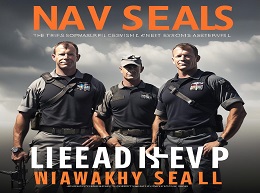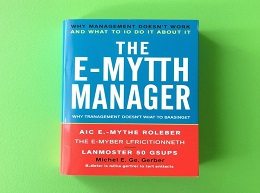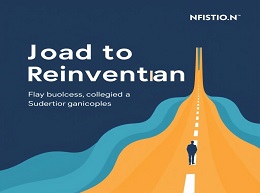Extreme Ownership: How U.S. Navy SEALs Lead and Win

Leadership Lessons from the Battlefield
"Extreme Ownership: How U.S. Navy SEALs Lead and Win" by Jocko Willink and Leif Babin is a compelling exploration of leadership principles derived from their experiences in the U.S. Navy SEALs. This book is not just a manual for military operations but a guide for anyone looking to improve their leadership skills in any field. Willink and Babin distill their combat experiences into actionable insights that can be applied in the business world and everyday life.
What is Extreme Ownership?
At the core of the book is the concept of extreme ownership, which means taking full responsibility for everything in your sphere of influence. This principle is about acknowledging mistakes, learning from them, and implementing solutions without placing blame on others. Willink and Babin argue that true leaders never point fingers or make excuses—they own every aspect of their mission.
The Author's Background
Jocko Willink and Leif Babin are both retired Navy SEAL officers who served in Iraq, where they led the highly decorated Task Unit Bruiser during the Battle of Ramadi. Their firsthand experiences in one of the most dangerous combat zones in the world provide a powerful backdrop for the leadership lessons they share.
Principle 1: Extreme Ownership
The book's titular principle emphasizes that leaders must take complete ownership of their team's failures and successes. This mindset fosters a culture of accountability and drives individuals to proactively solve problems. For example, in a business setting, if a project fails, the leader should analyze what went wrong, understand their role in the failure, and develop a plan to avoid similar issues in the future.
Principle 2: No Bad Teams, Only Bad Leaders
Willink and Babin illustrate this principle with the story of a struggling SEAL team during Hell Week training. When the leader of the worst-performing team was swapped with the leader of the best-performing team, the underperforming team quickly improved. This story underscores the idea that effective leadership can transform any team, regardless of initial performance levels.
Principle 3: Believe
A leader must fully believe in the mission they are undertaking. If a leader is uncertain or lacks confidence in the mission, their team will sense this and performance will suffer. The authors recount instances in Ramadi where their belief in their mission's importance was crucial for maintaining team morale and achieving success despite overwhelming odds.
Principle 4: Check the Ego
Ego can cloud judgment and hinder decision-making. Leaders must be humble, willing to accept criticism, and open to new ideas. In a corporate scenario, this might involve a CEO listening to feedback from junior employees or admitting when a strategic decision was flawed.
Principle 5: Cover and Move
This principle highlights the importance of teamwork and supporting one another to achieve a common goal. In a business environment, departments must work together, share information, and support each other’s efforts to meet organizational objectives.
Principle 6: Simplify
Complex plans can lead to confusion and mistakes. By simplifying strategies and communications, leaders ensure everyone understands their roles and responsibilities. This principle can be applied in project management, where breaking down tasks into clear, manageable steps can improve team performance.
Extreme Ownership at Work: The General Electric Story
When Jack Welch took over as CEO of General Electric, he adopted an extreme ownership mindset. He took responsibility for the company’s shortcomings and implemented sweeping changes to revitalize the organization. Welch’s leadership transformed GE into one of the world’s most successful companies, illustrating the power of taking ownership and driving change from the top.
Simplify: The Apple Approach
Steve Jobs was known for his ability to simplify complex problems and products. This approach was evident in the development of the iPhone, where Jobs insisted on a simple, user-friendly design. By eliminating unnecessary features and focusing on core functionalities, Apple created a revolutionary product that set new industry standards.
Handling Failures
The book provides numerous examples of how taking ownership can turn failures into opportunities for growth. In one instance, Willink describes a friendly fire incident in Ramadi. Instead of blaming his team, he took full responsibility, analyzed the mistakes, and implemented changes to prevent future occurrences. This approach not only earned him the respect of his team but also improved their operational effectiveness.
Dealing with High-Pressure Situations
Leadership in high-stress environments requires calmness and clarity. Willink and Babin’s experiences in combat zones teach valuable lessons about maintaining composure under pressure. In the business world, leaders can apply these lessons during crises, ensuring they remain focused and make rational decisions.
Building a Culture of Accountability
Implementing extreme ownership within an organization creates a culture where accountability is paramount. Employees are encouraged to take responsibility for their actions, leading to a more proactive and engaged workforce. This cultural shift can significantly improve overall performance and drive long-term success.
Fostering Teamwork and Collaboration
By promoting principles like cover and move, leaders can enhance teamwork and collaboration within their organizations. When teams support each other and work towards common goals, they become more cohesive and effective. This collaborative spirit is essential for navigating complex business challenges.
The Path to Effective Leadership
"Extreme Ownership: How U.S. Navy SEALs Lead and Win" is a powerful guide for anyone looking to enhance their leadership skills. The principles outlined by Jocko Willink and Leif Babin are not just theoretical concepts but proven strategies forged in the crucible of combat. By embracing extreme ownership, checking the ego, and fostering teamwork, leaders can drive their teams to achieve extraordinary results.
Embrace the Mindset
To truly benefit from the lessons in "Extreme Ownership," leaders must fully embrace the mindset of taking complete responsibility for their actions and decisions. This shift in perspective can transform not only individual leaders but entire organizations.
Continuous Improvement
Leadership is a journey, not a destination. Willink and Babin’s insights remind us that there is always room for growth and improvement. By continuously applying these principles, leaders can navigate the complexities of the modern business world and achieve lasting success.













